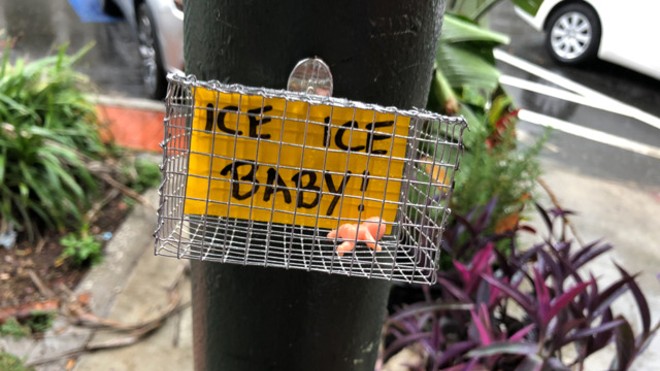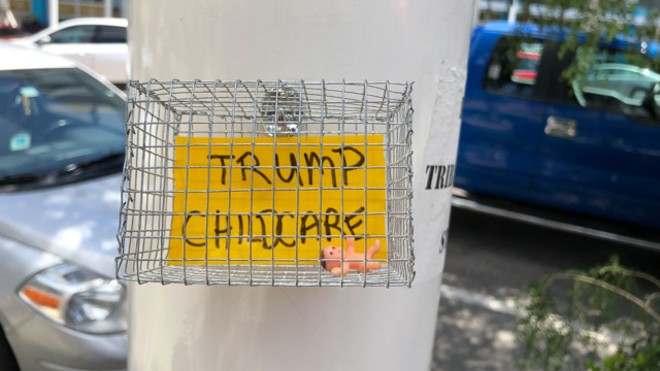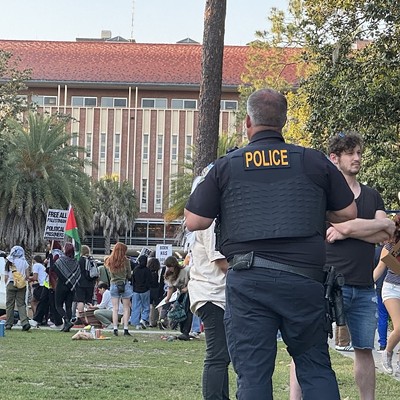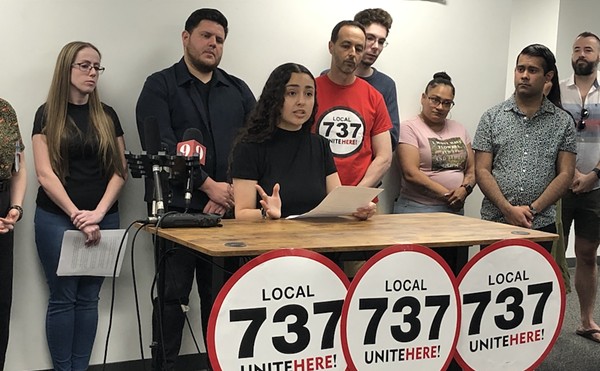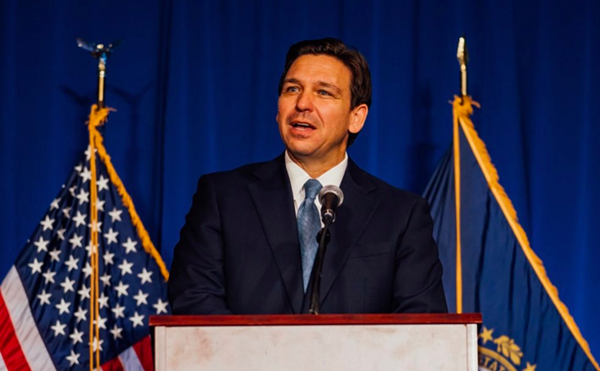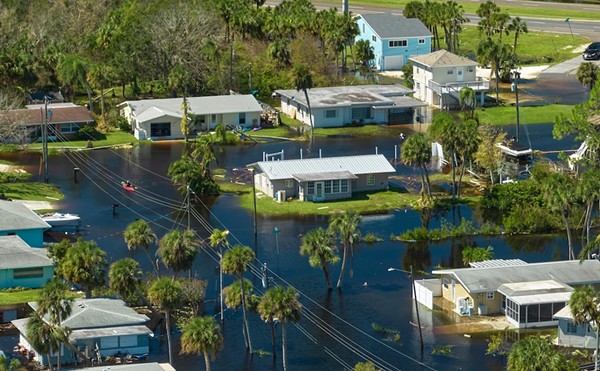“This is a little trying — doing [this project] with Trump and the current climate, because there are so many people so upset on both sides of the coin," Jorgensen says. "When some people see this, I’m sure it’s going to make them very angry. And people seem to be getting more permission to use violence with their anger. So it’s a little scary, but I feel so strongly about what’s going on, I feel I have to do something.”
So she ordered a bunch of mini plastic babies from Amazon. Each is about an inch long; they look like the tiny plastic babies you would pull out of a king cake during Mardi Gras. “They’re actually, I think, for bridal showers, to put in drinks,” says Jorgensen. She put each of these inch-long symbolic babies into cages of her own construction. There are 14 of them altogether.
It’s hard to say what the border cells, aka cages, look like in real life. U.S. Customs & Border Protection has released some photographs, but they appear to be limiting outside filming. When Elizabeth Warren visited a U.S. border processing center in McAllen, Texas about eight months ago, she was allegedly prohibited from bringing cameras or recording equipment inside.
“The processing center was unlike anything I’ve ever seen before. It was a giant warehouse with cages full of people,” Warren reported in a Facebook video. “It was a processing center. Only what they process are human beings. I’ve seen a couple of the pictures that have been released, of what the cages look like, but there are cages that are much smaller — maybe 10 by 30 [feet] — densely packed with men. One cage after another cage after another cage after another cage. And then in another part of the facility, the same sort of thing with women. The cages are so packed with people, I don’t believe they could all lie down at the same time.”
Video taken during Mike Pence’s tour of McAllen confirms Warren’s statements about overcrowding. According to an AP report, “when detainees saw reporters arrive, many began shouting, saying they had been there for 40 days or more and they were hungry and wanted to brush their teeth.”
Each of Jorgensen’s cages, now dotting St. Pete’s Central Avenue, is small enough to fit in a person’s hand. Small enough to be overlooked, yet powerful enough to be noticed and discussed. In the back of each cage, there is a saying to remind us of certain aspects of American history and our current migrant crisis. Several of the phrases used, like “no toothbrush,” directly reference conditions being endured by detainees at the border.
Most upsetting is that children are involved. A July 2019 report in the Washington Post estimates that the U.S. has taken approximately 3600 child migrants from their parents since May 2018. A Jorgensen-crafted cage with “Trump Childcare” written on the back reminds us of this.
“The sight of so many children in U.S. custody was jarring,” wrote reporter Nick Miroff in the Post after visiting the McAllen processing center. “Diapers, juice boxes and cookies were stockpiled throughout the facility, and in one area of the warehouse, outside the chain-link fence, a uniformed Coast Guard officer and a team of child care contractors knelt on a carpet with toddlers who had arrived lacking parents. ‘Despicable Me’ was playing in Spanish on a television. Few such comforts were available for the older children, including teenage boys jammed into a holding pen with barely enough room to lie down. ‘We’ve been here four, five days,' said members of a group from El Salvador, pointing to others who had been waiting longer.”
Multiple reports of crying children emerged in the wake of Trump’s zero-tolerance policy. A 2018 article in The Atlantic, reported that shelter staff were prevented from hugging the children to comfort them. The article also cited testimony from a former shelter staffer, Antar Davidson, who says he was asked to tell two siblings they weren’t allowed to hug. At the back of one of Jorgensen’s cages, “No hugs” reminds us of these testimonies.
Two of Jorgensen’s cages reference writing on the Statue of Liberty: “Give me your tired, your poor, your huddled masses yearning to breathe free. The wretched refuse of your teeming shore.” They are the 10th through 12th lines of a poem written by Emma Lazarus in 1883. It’s a statement of human values that, over the years, we’ve come to see as American.
Yet when Lazarus wrote those words, it was likely in protest of the Chinese Exclusion Act. Passed in 1882, the Chinese Exclusion Act was the first federal law to place limits on the immigration of certain types of people into the U.S. Walt Hunter re-evaluated the poem’s history and meaning in The Atlantic just as people and politicians started citing the sonnet in response to Trump’s immigration policies. These oft-cited lines were spoken by the “Mother of Exiles” with “silent lips,” Hunter writes. If you read the entire poem, you’ll see the call to protest in lines like “Silence has ravaged us. Our tears have become a sea” and “Raise up a cry.”
Jorgensen hopes you will raise up a cry in protest of the current conditions at the U.S.-Mexico border.
“It’s very important to be vocal," she says. "Otherwise, you’re complicit with what’s going on. You’ll wake up one day, and I think you’ll have a difficult time explaining this to the next generation. How did you let this happen? I don’t know. It just happened.”
Stay on top of Orlando news and views. Sign up for our weekly Headlines newsletter.

